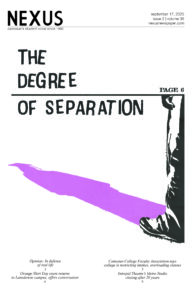Digital connection has never been more essential. We stay close to friends across continents, access unlimited information, and build communities around shared interests. Life is lived increasingly online, and while millennials and Gen Zs have been coined as “digital natives,” our digital ecosystems have become fertile ground for conquest by those seeking profits.
Your attention is the product being sold. As Gen Z’s favourite economist Kyla Scanlon explains, “attention is infrastructure”—it’s the foundational input that shapes everything else in our digital economy.
Studies show that more than 50 percent of Instagram posts promoting ultra-processed foods use deceptive health cues, while 77 percent of #fitspo videos featuring women focus on a single body part instead of on genuine wellness. Engaging in problematic social media use like this has been associated with measurable physical changes in adolescent brain structure. Social media doesn’t just influence—it’s systematic reality distortion.

Generations are defined by shared formative experiences during identity development. For us “digital natives,” those experiences occurred within systems designed to exploit psychological vulnerabilities.
As a millennial who witnessed social media’s emergence—even lying about my own age so I could poke friends on Facebook in the 2000s—I’ve watched this unfold firsthand. I’ve also experienced the personal cost of prioritizing digital connection over human presence.
Like many mature students balancing competing obligations, I’m grateful for online learning’s accessibility, yet my higher education path has presented unique challenges within remote contexts. Digital connection can be isolating and may complicate access to nuanced understanding, inadvertently compounding social barriers for college students seeking transformative personal growth.
This reflects broader research showing how digital relationships lack the depth of in-person connection. It’s been documented that increases in adolescent anxiety, depression, and suicide aligned with the rise of smartphones and social media’s ubiquity. These extreme costs aren’t just personal.
The real-life AI data centres required for the expansion of our digital networks are massive, loud, and environmentally destructive. Virtual products of the digital economy exist alongside real-world businesses, highlighting a crucial distinction we’re losing sight of: digital life has real-world implications.
So, prioritize human connection: join study groups; go dancing; meet with friends; shop local. These aren’t nostalgic gestures—they’re strategic choices. Students who step back from digital-first approaches and step into real life report better focus, deeper friendships, and more authentic learning experiences. Attention flows from your mind like a freshwater spring—protect it.
Yet defending real life isn’t necessarily rejecting technology. Dating apps have allowed queer people like me to find others in ways that weren’t possible before, and digital tools can genuinely facilitate real-world connection. But we must refuse to allow digital systems to replace human experience, especially during formative periods of development. Generation Alpha will inherit an even more sophisticated attention-harvesting machinery, making our choices today crucial for establishing different patterns.
The neurological benefits of in-person connection are undeniable. Your capacity to think, feel, and form authentic human relationships shouldn’t be treated as a commodity. Unfiltered reality serves as an antidote to algorithmic manipulation.
In a world where social-media platforms attempt to hijack and warp our reality, choosing physical presence is revolutionary defence.
